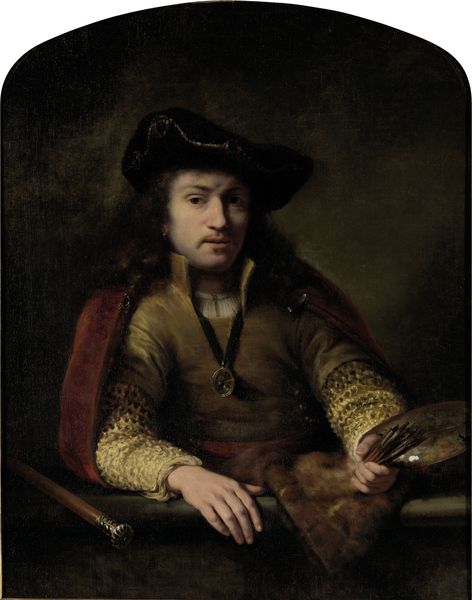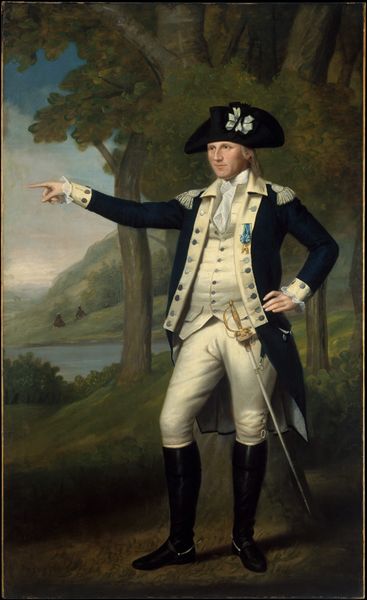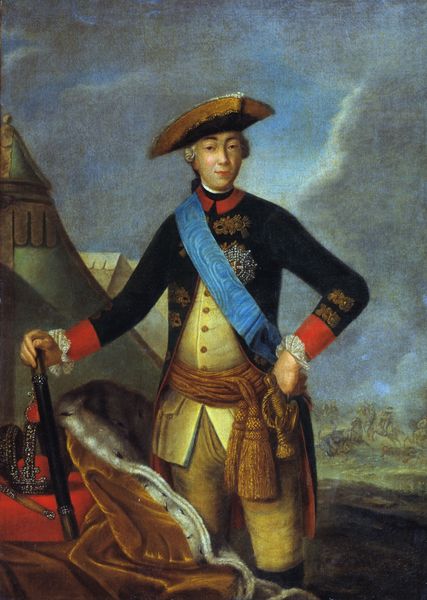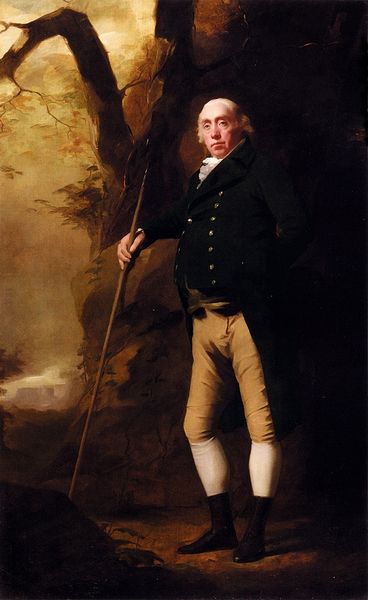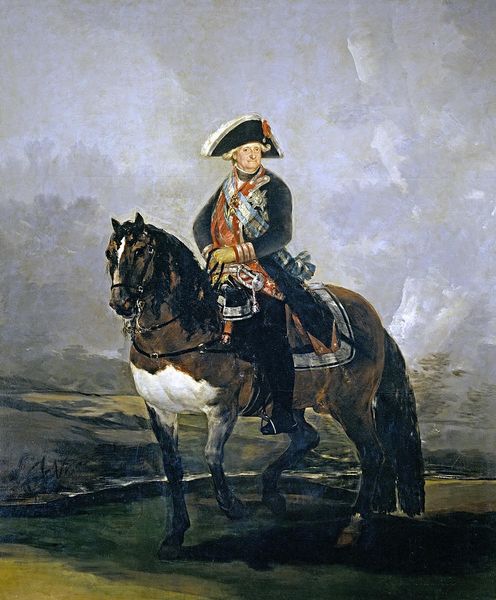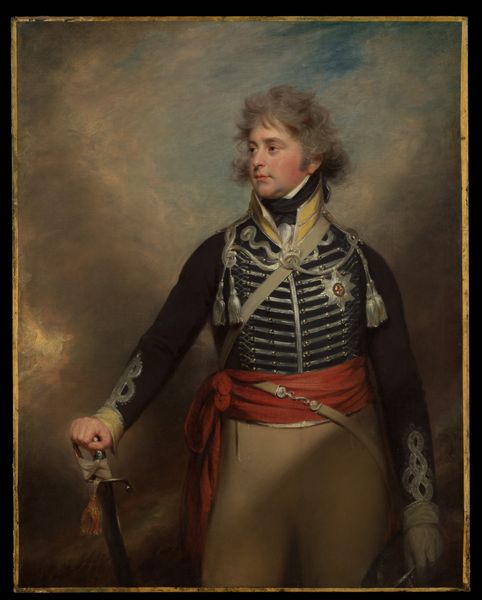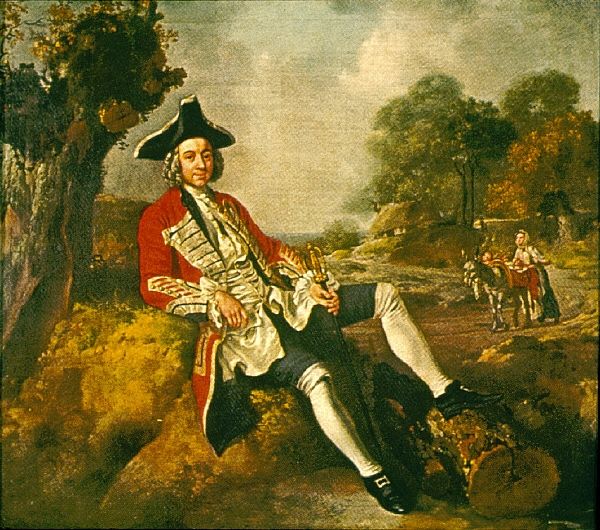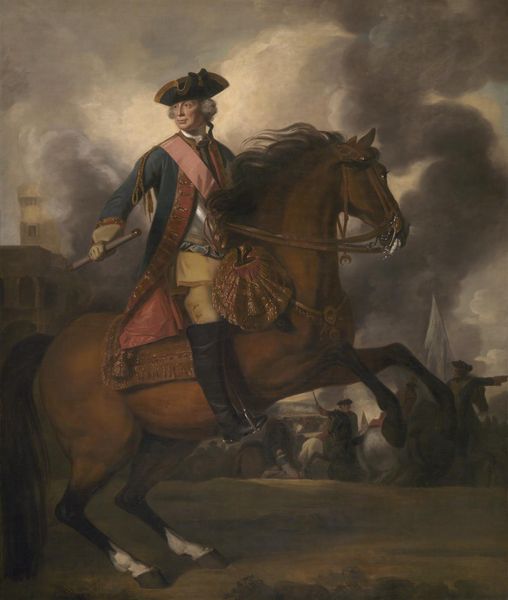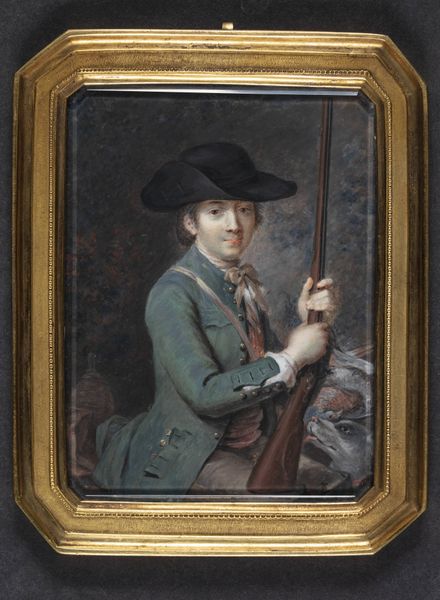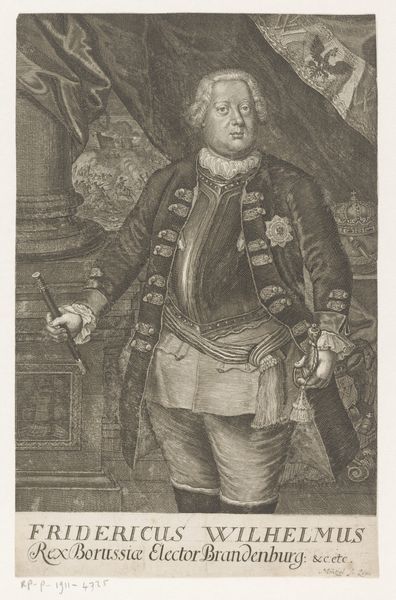
Gerrit Sichterman (1688-1730). Quartermaster-General of the Cavalry, Colonel of the Oranje-Groningen Infantry Regiment, Commandant of Grave 1725
0:00
0:00
cornelistroost
Rijksmuseum
oil-paint
#
portrait
#
baroque
#
oil-paint
#
oil painting
#
history-painting
Dimensions: height 69.5 cm, width 56.5 cm, depth 8 cm
Copyright: Rijks Museum: Open Domain
Curator: Here we have a portrait of Gerrit Sichterman, painted in 1725 by Cornelis Troost. Sichterman was a Quartermaster-General, Colonel, and Commandant during the early 18th century. The work is oil on canvas and is now held at the Rijksmuseum. Editor: Well, my first impression is that he looks…commanding! A bit powdered, perhaps. The lighting is theatrical, as if he's stepped out of a play onto a smoky stage. Curator: The Baroque influence is quite pronounced. Note the dynamism, the rich colours, and how Sichterman’s status is communicated through carefully chosen symbols. He’s positioned against a tent, suggesting his military role, but also beside what appears to be architectural plans—linking him to civil administration. We have to read this in the context of the Dutch Republic's complicated relationship with military authority at the time. Editor: That pose, too, one hand gesturing authoritatively while the other grips his walking stick... there's a confidence, or perhaps controlled swagger, in the arrangement of limbs and fabrics that conveys immense authority, however unsettling to our eyes today. I get a distinct sense that his power extends far beyond the frame. What about the detail around the wig? The artist spent an exceptional time to draw every hair detail, in contrast with the flat painting behind the portrait. It is quite a juxtaposition. Curator: Precisely. Troost utilises detail and realism selectively. The wig, lace cravat, and the embroidered coat are rendered with precision to draw the eye. The backdrop is less defined to enhance the sense of immediate presence, pulling Sichterman into the viewer’s space, while at the same time embedding him in this landscape he supposedly lords over. Considering Dutch society at the time, this tension might express anxiety related to inherited power. Editor: And all of it constructed for posterity, right? The man, the image, the aspirations, all mediated by artifice. There is something touchingly fleeting about his presence that almost becomes tragic. How will history, in which we play but a little role, see all of it? Curator: Absolutely. It encourages us to consider how identity is constructed through both artistic representation and social circumstance. Reflecting on these early portraits helps us unravel contemporary questions of power and its manifestations, from gender performativity to socio-economic class and race in a society marked by profound disparities. Editor: A thoughtful meditation, then, on what it means to lead, and the role of spectacle in the exercise of power – a fitting theme for today, really. Curator: Indeed, this image resonates across time, allowing us to reconsider the many guises and disguises of power.
Comments
No comments
Be the first to comment and join the conversation on the ultimate creative platform.


